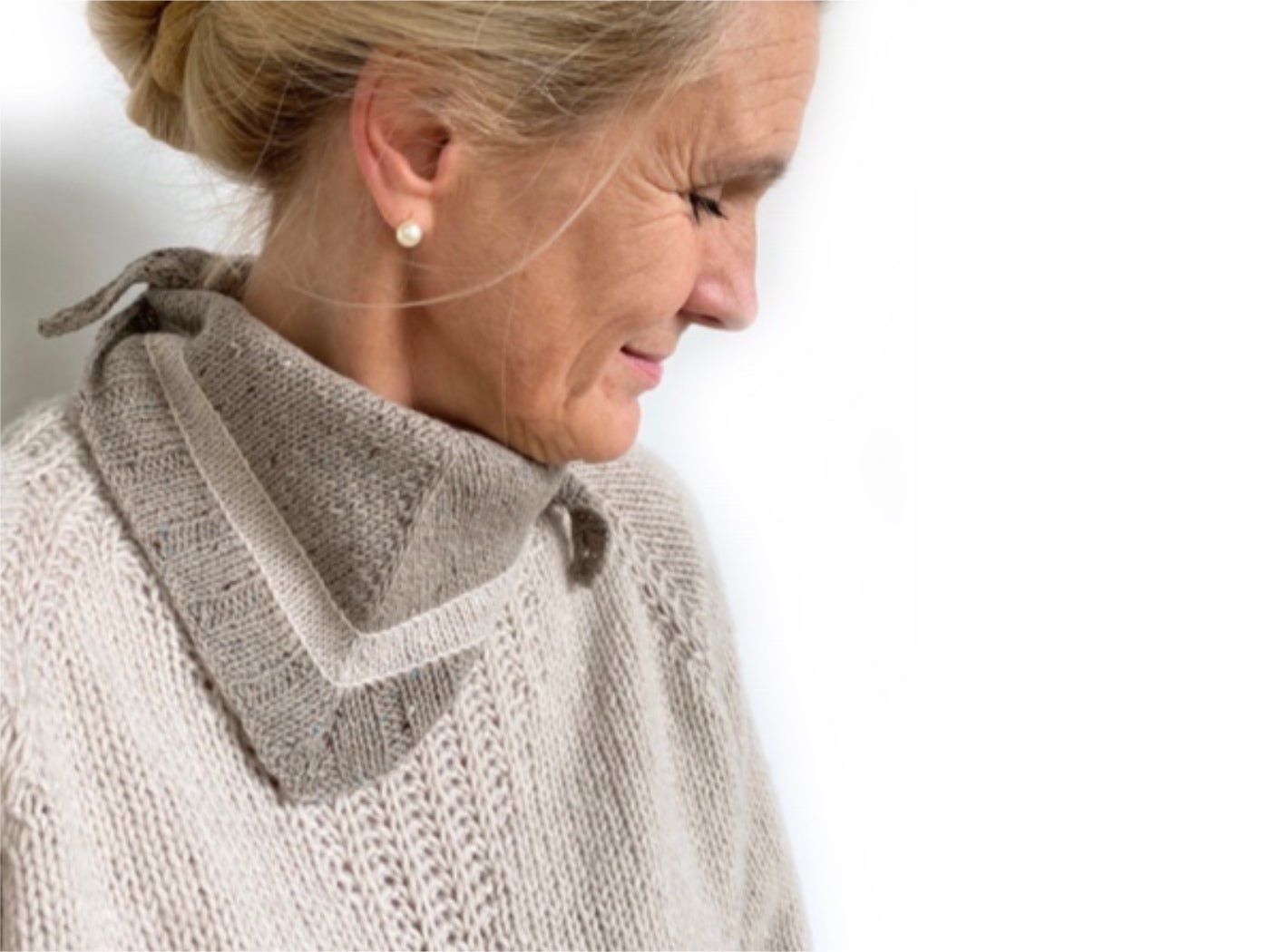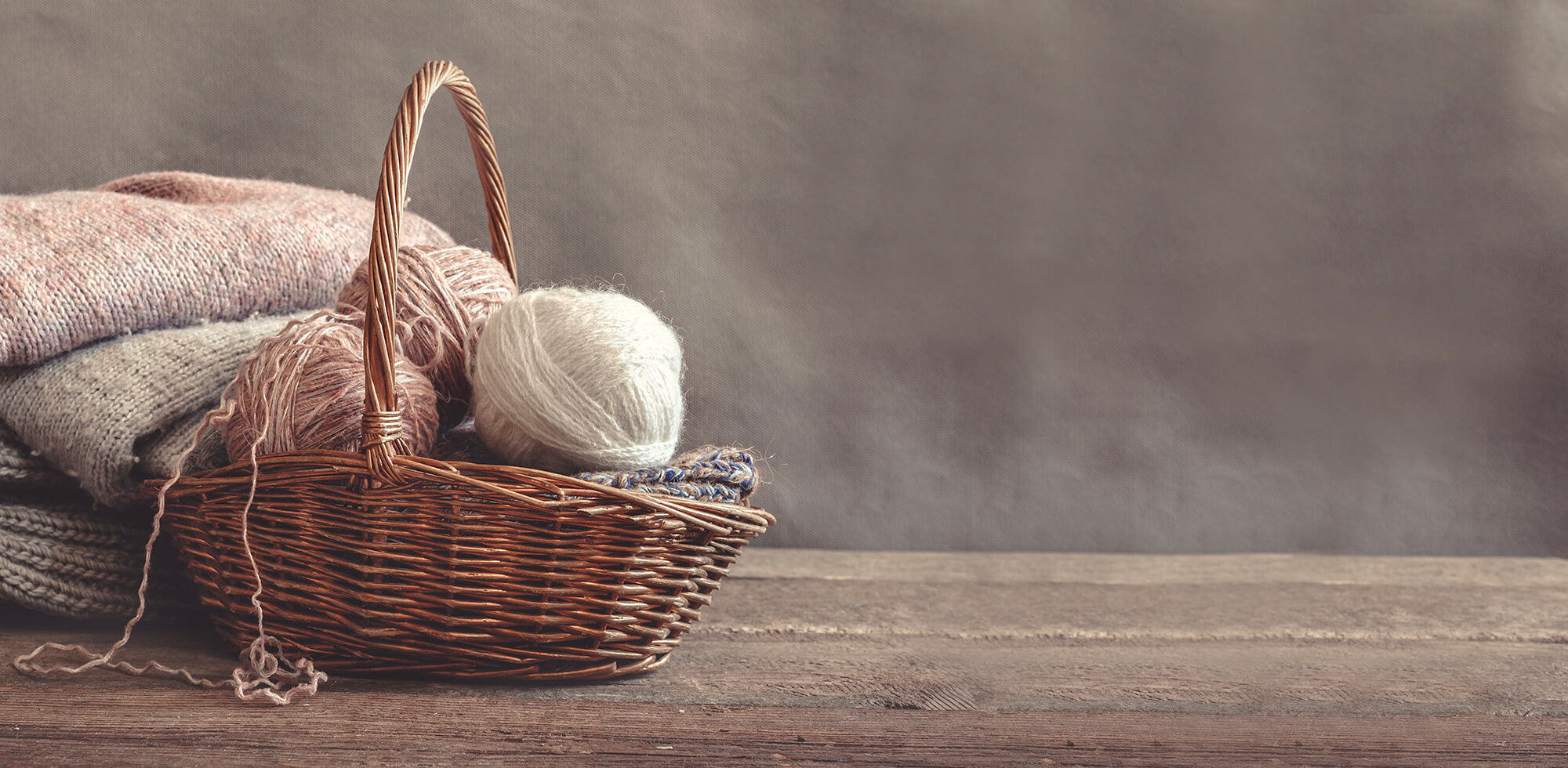By Claudia Ostrop
There is no doubt that most fibres that are processed into (knitting) yarns are already beautiful in their natural colours, be it the off-white of silk or cotton, or the different shades of animal hair and wool. The natural colour palette is quite diverse, ranging from white to light grey, beige to dark grey, dark brown to almost black. When fibres of different natural colours are spun together, the result is a very beautiful, vibrant yarn. Nevertheless, as beautiful as the natural colours of the individual fibres are, it can be a bit monotonous in the long run. So, adding some colour is a must!
A Brief Historical Detour
It is difficult to say exactly when the first yarns were dyed, as dyeing has a long history and has been practised for thousands of years in many cultures around the world.
One of the earliest known methods of dyeing yarn comes from ancient Egypt. Natural dyes such as plant extracts and minerals were used to dye yarn. The Egyptians were known for creating a variety of colours, including bright reds and vibrant blues and greens. Dyeing was also widespread in ancient Greece and the Roman Empire. They also used natural dyes derived from plants, insects and the shells of murex snails.
In the Middle Ages, yarn dyeing became an important craft, especially in Europe. Craftsmen and guilds developed special techniques and recipes to dye yarns in different colours and shades. Plants, roots, leaves, bark and insects continued to be used as natural dyes.
With the rise of industrialisation, chemical dyes were developed in the mid-19th century, revolutionising yarn dyeing. The discovery of synthetic dyes allowed for a wider range of colours and faster, cheaper dyeing on an industrial scale.
Natural or Chemical Dyes?
Today, we are not talking about methods you can use to dye wool and yarn yourself, which seems to be quite trendy at the moment. The aim is to give you some basic information about the two alternatives and answer the question of whether there is a right or wrong way to dye yarns. Or, better said, a better or not so good way to dye them.
Natural Dyes
Natural colours and dyes can be obtained from a variety of sources: Plants, minerals, and animals. Plants are probably the first thing that comes to mind when you think of natural dyes. Plant dyes can be used to dye yarns and fabrics in a wide range of colours. The dyes must first be extracted from the plants. This is usually done by boiling the raw material. Sometimes a fermentation/oxidation process is used, as in the case of indigo dyeing.
Classical dyeing plants include indigo, which produces the famous blue hues, madder roots for rich reds, and walnut (leaves and shells) for browns. Most leafy green plants produce yellow or yellowish-green colours.
If you are curious, the internet is full of lists of plants that can be used for dyeing - both 'exotic' plants such as madder root and native plants such as chamomile, reeds, tansy and oak. The kitchen also has a wide range of materials for dyeing, such as onion peel, red cabbage and avocado.
A dye of animal origin is carmine or cochineal red. Most people have probably seen it. This dye is obtained by extracting the colour from the dried female cochineal lice.
Minerals can also be used to dye or colour yarn, for example iron oxide.
Chemical Dyes
There are a variety of synthetic dyes that have been formulated specifically for dyeing yarns and wool. Common chemical dyes used in the textile industry include acid dyes. These are water-soluble dyes that combine well with protein fibres such as wool and silk. So-called direct dyes are water-soluble dyes that can be applied directly to the fibres without the need for additional aids such as mordants. They are commonly used for cotton, viscose and wool. Reactive dyes are a type of dye that reacts chemically with the fibre to form a strong and permanent bond. They are mainly used for cellulosic fibres such as cotton and viscose.
Advantages and Disadvantages
As you know, Pascuali is very concerned about sustainability and environmental protection. Wouldn't it be obvious to dye the yarns with dyes of natural origin?
Well, although it might be a good thing, when it comes to large quantities of dyed yarn, natural dyes are (unfortunately) not the way to go. Here is a summary of the main advantages and disadvantages of the two dyeing methods.
Natural dyes and their benefits
• Natural dyes are derived from plant, animal or mineral sources and are therefore usually more environmentally friendly and always biodegradable.
• Because they come from natural sources, natural dyes are a more sustainable choice than chemical dyes.
• Natural dyes are usually less likely to cause allergic reactions or skin irritation.
Natural dyes and their drawbacks
• Natural dyes can generally produce less vivid colours and are usually less resistant to washing, light and wear.
• The colour range of natural dyes is more limited than that of chemical dyes, and they tend to be more expensive.
• It is almost impossible to reproduce the same shade of colour over and over again because, for example, the dye content of plants varies naturally and even the acidity of the water has a significant effect on the colour.
Chemical dyes and their advantages
• Chemical dyes can be used to produce intense colours that allow a wide range of shades and nuances.
• Chemical dyes tend to have high wash, light and abrasion resistance. As a result, colours last longer.
• Synthetic dyes are widely available and can be produced in large quantities.
• Chemical dyes can be precisely controlled and reproduced, which is important for the large-scale production of dyed yarns.
Chemical dyes and their drawbacks
• Synthetic dyes may contain chemicals such as heavy metals or synthetic compounds that are potentially harmful to the environment.
• Sensitive people may be allergic to the substances used in chemical dyes, which can cause skin irritation or other health problems.
• The production and disposal of chemical dyes can have a negative impact on the environment, especially if they are not handled or disposed of properly.
So, Which Is better? Which Is Worse?
When you look at the advantages and disadvantages of the two types of dyes, it quickly becomes clear that there is no right or wrong. Both types of dyes have their place. While natural dyes are a good option for hand dyers, they are not practical for large - standardised - dyeing quantities.
It is possible to dye muted, natural-looking colours with chemical dyes, but not the other way round. With natural dyes, the dyer always works within a rather muted colour spectrum. Even if it is possible to achieve strong, bright colours, it will never be possible to create anything like neon colours with natural dyes.
Although natural dyes are generally more environmentally friendly, it is important to remember that some plants have allergenic or at least irritant potential.
Acid dyes are used for Pascuali's protein fibres, i.e. wool and silk, while Pascuali's cotton and viscose yarns are dyed with reactive dyes. All chemical dyes used in Pascuali yarns are either Oeko Tex Standard 100 or REACH certified. As with all the other stages in the production of the finished yarn, great care is taken to ensure that the environment is not unnecessarily burdened. And, of course, to ensure that there are no unpleasant skin reactions either when the yarn is knitted or when the finished garment is worn.
It goes without saying that the colours of Pascuali yarns will retain their beauty for a long time, even after frequent wearing and washing 😊




